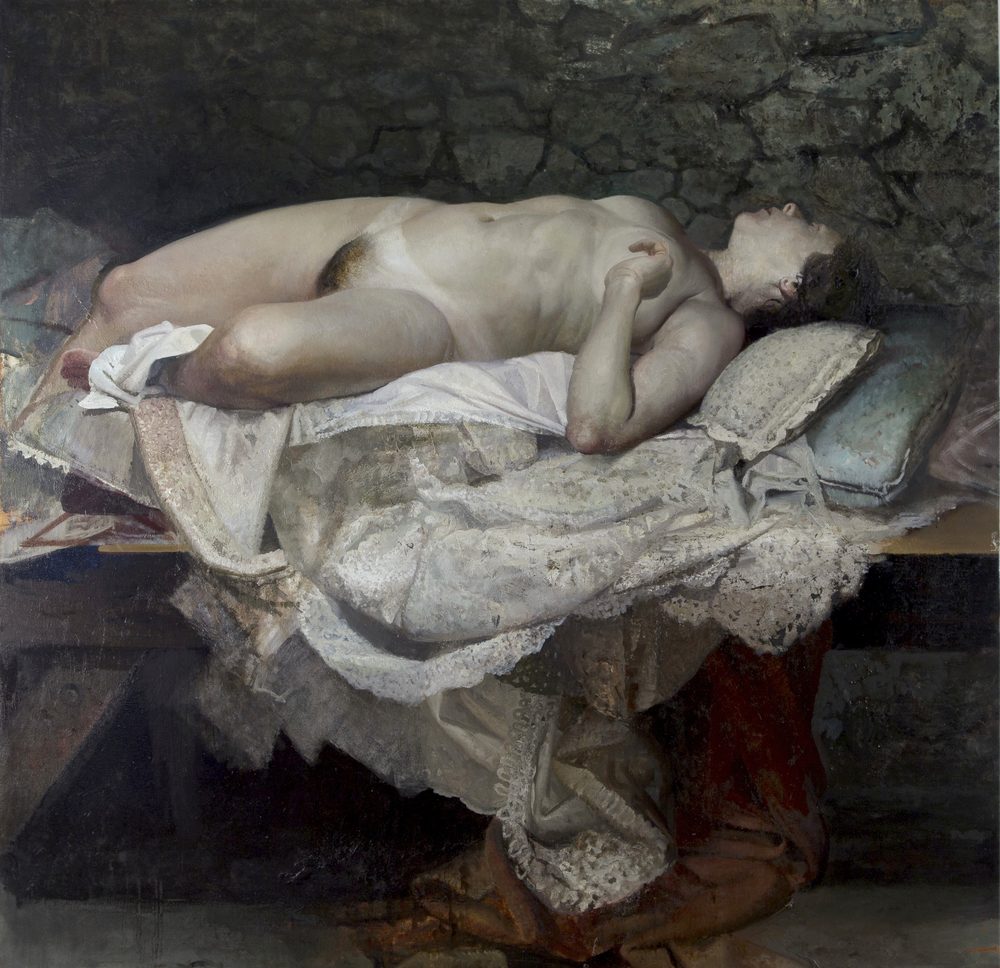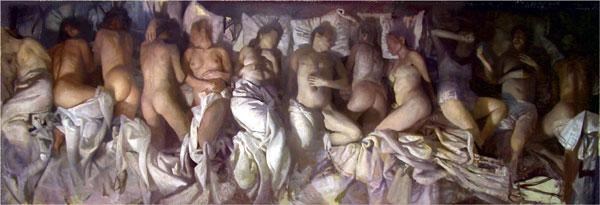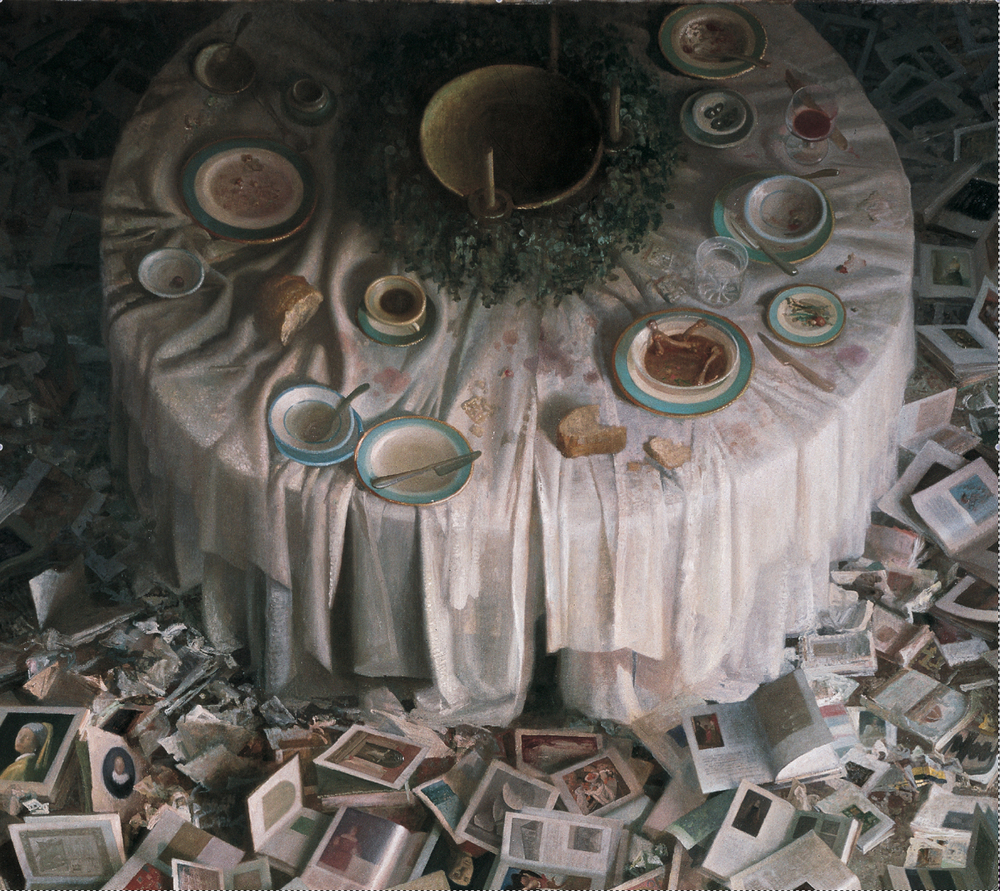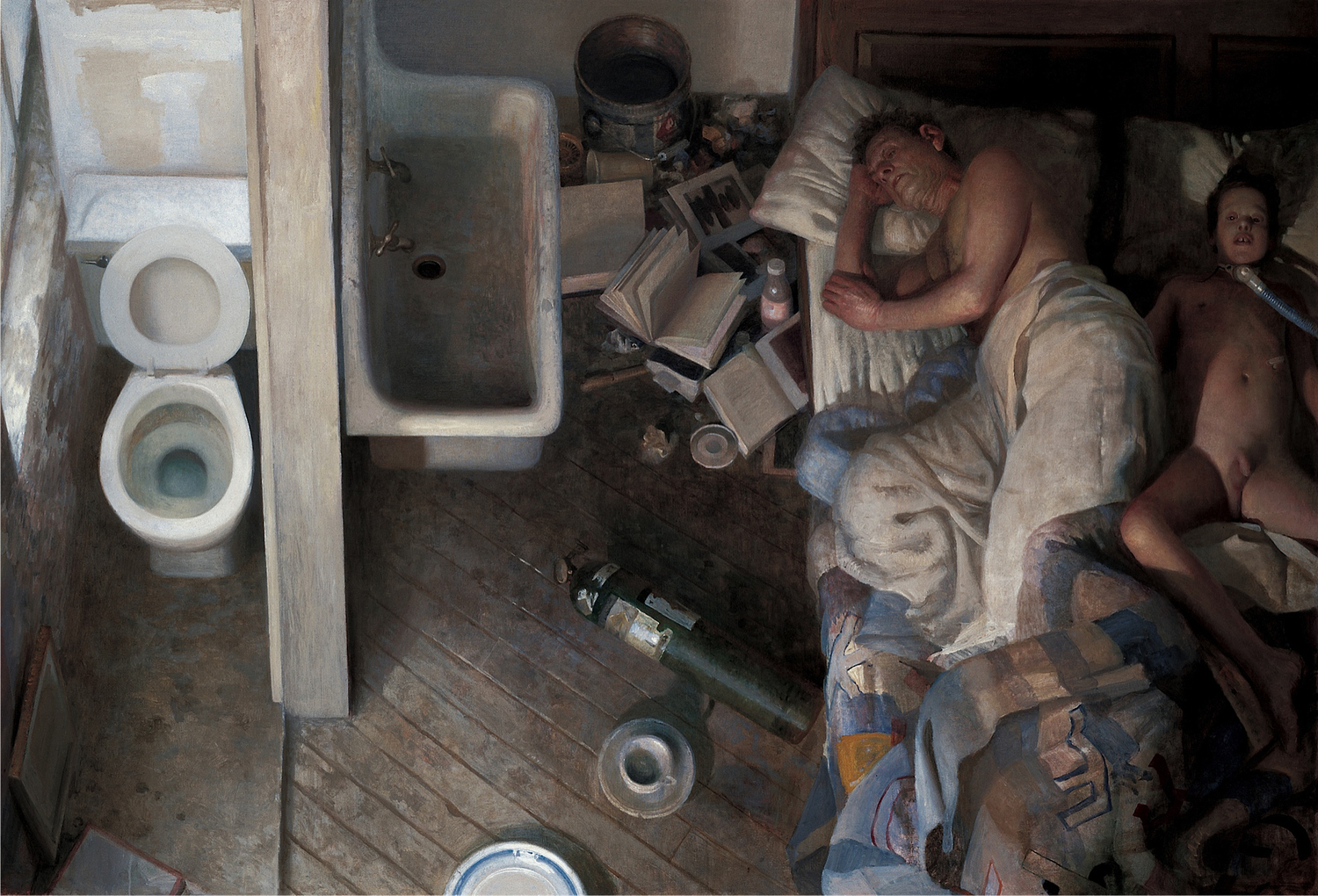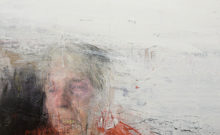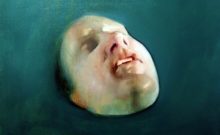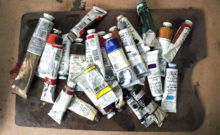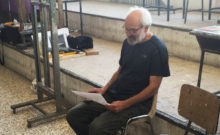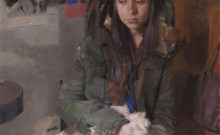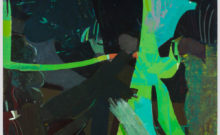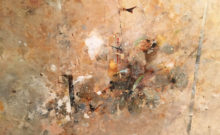A workshop memory
I remember that, during a workshop I attended years ago, Antonio López held an informal colloquium at the end of the day. Urged by the questions, he talked to us about painting and painters; about his predilections and his rejections. Antonio López is not usually very condescending with other artist’s work; it seems that his criterion is intuitive and visceral, although rarely offensive. His judgments moves between sincere interest or indifference. Then someone mentioned Vincent Desiderio and he showed absolute respect. He recognized in Desiderio’s painting a content that transcended the simple dramaturgy of representation. He spoke to us about the beauty of forms, about his love for order. Antonio López believed, he said, that Vincent Desiderio had the greatness of the modern creator, in solitude in front of his work. What he admired in his painting was a sort of expression that, rooted from deep substrates, revealed his commitment to transcribe the beautiful spectacle of the world.

Vincent Desiderio
Finding a pathway
Vincent Desiderio had a solid artistic background and lived through the end of avant-garde movements and their agonizing effort to push innovation to the limits.He began practicing a painting that could be ascribed to Abstract Expressionism and soon, perhaps enlightened by his knowledge of art history, he understood the fallacies and artifices of post-modernism’s forge ahead. Therefore he decided that it was preferable to simply paint, free of complexes and labels.
I remember that in the workshop that Vincent Desiderio taught in Madrid, he spoke about the moral duty, inherent to every artist, to question the establishment. He lamented the way in which post-modernism, by inculcating a cryptic ideology formulated by pseudo-visionary thinkers who have never held a brush, was leading painting to a dead end. As a paradoxical consequence of this nihilism, many post-modern artists have ended up being domesticated by the art market system. You don’t need to work hard to find recent examples in the current art scene.
Vincent Desiderio artistic method
Vincent Desiderio claims, both from practice and teaching, the validity of the essential language of painting. To quote his own words:
The differences that at one time separated figuration from abstraction and conceptual painting are no longer relevant. Painting is always and everywhere representational, conceptual, ironic and abstract. These components, over the last century, have found expression in a variety of new media. But they have always been at play within painting itself, within the historical practice of painting
.
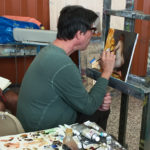
Vincent Desiderio demo at The Art Digger workshop in Madrid
Vincent Desiderio proposes a painting in which the transcendent must be articulated through a deep study of light and color in order to reflect those qualities in the work.
Among other interesting reflections he explained that, in general terms, the light-shadow relationship is always of opposites: in temperature and transparency. When the light is warm, the shadow is cold and vice versa. The common errors derived from deviations from these statements produce “muddy” (lights and warm shadows) or “chalky” (cold lights and shadows) paintings.
The lights are represented with opaque colors and the shadows acquire depth with the transparent colors. Vincent Desiderio does not paint what he sees but what he thinks and although it seems incredible, he rarely works with natural models.
As a result his pictorial process could be summarized in the following steps:
- Infra-painting which is what provides the general temperature. (When working on paper, he apply a layer of shellac)
- Warm glaze that usually applies with a hot sienna color and then with partial glazes of different colors paying attention to the areas of opacity (light) and transparency (shadows)
- Use of opaque paint applied to the previous transparencies by playing with the extension of the strokes looking for the optical grays. He chooses these colors intentionally cold and then apply over them successive transparent warm glazes
- From here, an intuitive succession of opaque and clear paint applications on darker surfaces (“scumble”) and successive transparent glazes is developed.
Palette and medium
His color palette is wide and varied but the one he recommended in the workshop he teach in Madrid represents his basic palette:
titanium white, unbleached titanium white, raw sienna, yellow gray (Holbein) earth, burnt sienna, cadmium red light, transparent brown (Windsor & Newton), raw umber, burnt umber, terra verte, green bladder, Van Dyke brown (Holbein), warm gray (Old Holland) and Ivory black.
As a medium, he uses Liquin fine detail (fast-drying alkyd medium)
Painting to enlighten yourself
In these lines that I write about Vincent Desiderio I can not help but to note his human quality. I consider him a friend and a master. His sensitivity and generosity make him worthy of the adjective with which the Spanish poet Antonio Machado played in his poem “Autorretrato”: “he is, in the good sense of the word, good”. (1)
Vincent Desiderio paints to enlighten himself. Enemy of the pure academicism that produces an insubstantial painting, he preaches the need of a deep understanding of the essence of painting creation; from its historical background to its open future.
This essence is what he refers to as the technical narrative; the intimate and intuitive act of painting that does not produce a rational outcome but the physical transmutation of a poetic thought process.
(1) In Spanish the translation for good is “bueno” and colloquially can have an ironic sense as to point out that someone is sly.
Recommended Links:
Theseus: Vincent Desiderio on Art
Vincent Desiderio: Paintings 1975-2005
Vincent Desiderio: Selected Works
Vincent Desiderio: Recent Paintings

